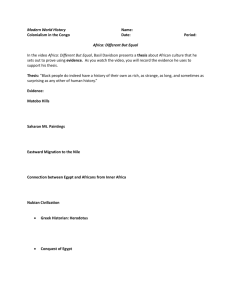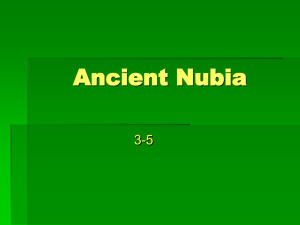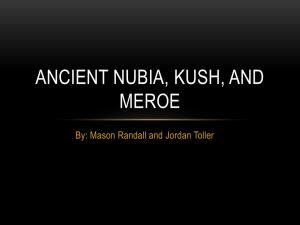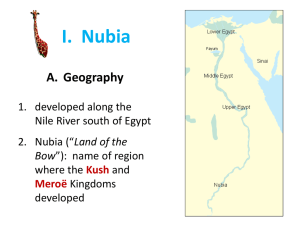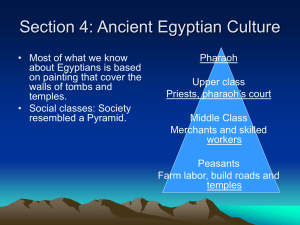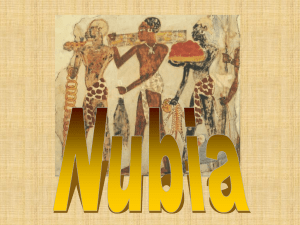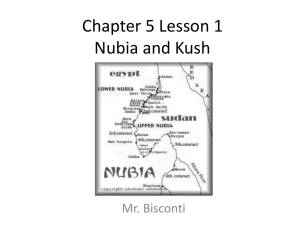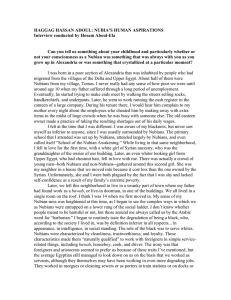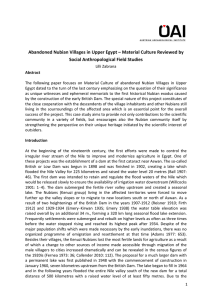Nubia and Phoenicians Notes
advertisement
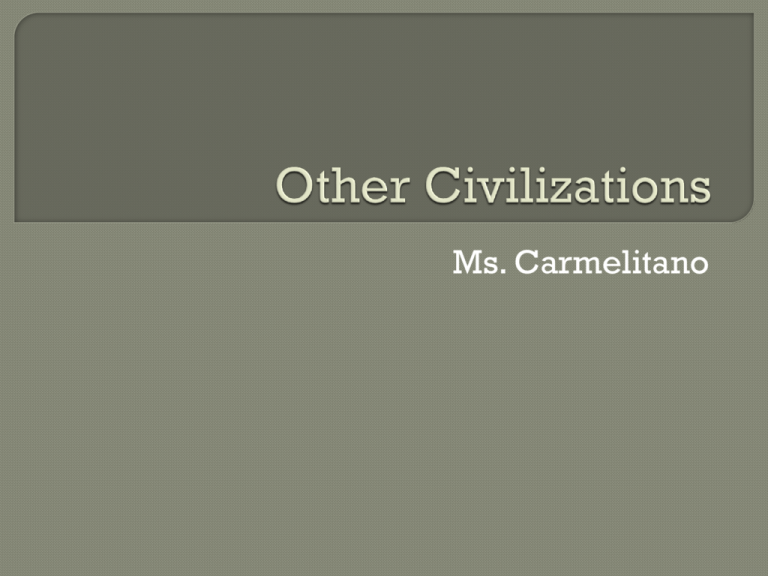
Ms. Carmelitano Located along the Nile River south of Egypt. • Nubian territory stretched as far south as modern Sudan • Controlled by Egypt for over 1,000 years, but eventually gained independence from Egypt. Due to their close proximity to Egypt, Nubians shared much of their culture • Art, architecture, religion • The two were trade partners Animal skin, timber, ivory (scarce in Egypt) The Nubians were able to obtain rare animals and ivory because of their proximity to the Sudan, in Africa In 751 B.C.E., King Piankhi of Nubia took over Egypt and established a Nubian dynasty there. • Became the beginning of 25th dynasty • In 671 B.C.E., the Assyrians conquered Egypt. The Nubian (Kushite) royal family fled back to Nubia. Major cities = Napata and Meroe • Napata was the capital city The Phoenician homeland was located on the coast of the eastern Mediterranean Sea. • Independent city-states Major occupations = Shipbuilders and Seafarers They traded and set up colonies and citystates along the coast of the Mediterranean Sea. • Purple dye made from shellfish murex Most powerful colony = Carthage The Phoenicians greatest contribution to world civilization was the alphabet. In 842 B.C.E., the Phoenician homeland and eastern city-states were captured by the Assyrians. The western city-states, including Carthage, continued to prosper.
